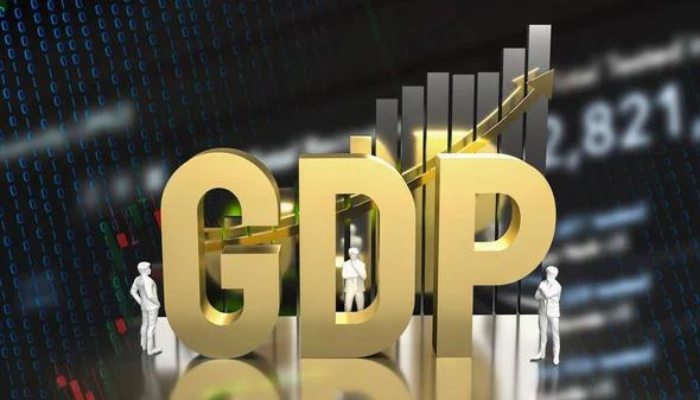Nigeria’s government is rolling out an ambitious strategy to coordinate fiscal and monetary policies in a bid to double the size of its economy and bring inflation back to single digits within two years.
The Disinflation and Growth Acceleration Strategy (DGAS), unveiled by Doris Uzoka-Anite, minister of state for Finance at the Central Bank of Nigeria’s (CBN) Executive Policy Seminar in Abuja on Tuesday, targets annual gross domestic product (GDP) growth above seven percent by 2027 and positions the country to reach a $1 trillion economy by 2037.
“Nigeria’s goal is to generate a GDP of over seven percent per annum by 2027. Mathematically, that means that by 2037, we would have doubled Nigeria’s GDP,” Uzoka-Anite said.
The plan to double the economy comes after the West Africa nation’s GDP surged to N373 trillion ($243 billion) in 2024, following a rebasing exercise that accommodated sectors that were previously omitted.
Read also: E-governance bill nears passage, boosts $1trn GDP goal
The framework, jointly developed by the Ministry of Finance and the CBN, represents what the government calls the second wave of reforms following foreign exchange (FX) and energy pricing liberalisation implemented in 2023 that saw inflation balloon to multi-year highs before cooling to now 18 percent as of September, 2025.
While those initial moves restored market discipline, DGAS aims to unlock real sector productivity, expand domestic output, and sustain inclusive growth.
Unified policy engine to power growth
Under DGAS, both institutions will operate through a single-window platform that integrates development finance, private capital mobilisation, and performance management.
The CBN will calibrate interest rates and liquidity tools to support non-inflationary expansion, while the finance ministry will channel capital spending toward infrastructure and productivity-linked projects.
A joint fiscal–monetary dashboard will track real-time indicators such as inflation, credit growth, and employment, ensuring that interventions are data-driven. Performance targets include reducing inflation to single digits within 24 months, achieving seven percent non-oil GDP growth by 2027, and creating at least five million new jobs through DGAS-aligned initiatives.
The initiative, Uzoka-Anite said, “bridges fiscal intent with monetary execution” by ensuring that credit incentives, FX reforms, and budgetary priorities reinforce each other rather than work at cross purposes.
From stabilisation to structural change
The plan’s nine pillars revolve around boosting capital formation, industrial productivity, energy expansion, technology deployment, and regulatory reform. The minister said the framework is designed to “convert policy ambition into implementable actions” that can stabilise prices while accelerating growth.
A major feature of DGAS is the creation of Special Industrial Economic Zones with pre-approved regulatory frameworks and access to land, power, and logistics. These ‘plug-and-play’ zones are intended to attract investors and reduce the cost and time of doing business.
Uzoka-Anite noted that Nigeria still imports about 70 percent of the raw materials used in its industries, a vulnerability that exposes the economy to global price shocks. She cited the Dangote Refinery as an example of how local value addition can create jobs and wealth. Replicating that model in agriculture, mining, and manufacturing, she said, could add as much as three percentage points to annual GDP growth.
Energy and technology drive
DGAS also emphasises expanding access to energy from oil, gas, hydro, solar, and wind sources, with gas serving as a transition fuel for industrial and power generation. The plan aligns with global carbon-market frameworks to attract green finance and position Nigeria as a regional energy hub.
In technology, the government aims to expand broadband access, build AI-ready data centers, and promote automation across key sectors such as manufacturing and agriculture to drive productivity gains.
Ten million youths to be trained in priority sectors
The strategy also seeks to harness Nigeria’s demographic potential through a training-to-work pipeline enrolling as many as 10 million young people annually in technical and vocational programmes linked to DGAS priority sectors.
Uzoka-Anite said consumer credit will be repositioned as an engine of domestic demand through the expansion of the National Consumer Credit Platform, enabling citizens to access structured loans for housing, education, healthcare, and household goods. “We must transform 200 million Nigerians into active participants in national prosperity,” she said.
Cutting red tape to ease doing business
DGAS also targets a sweeping review of regulations that stifle enterprise. The government estimates that eliminating redundant rules could lift GDP growth by up to three percent annually. Ministries and agencies will be required to justify each regulation based on its economic value and contribution to productivity.
The minister said about 40 percent of current rules could be scrapped, adding that agencies such as the Securities and Exchange Commission (SEC) and the National Insurance Commission (NAICOM) are already revising frameworks to improve competition and investor protection.
Read also: IMF sees Nigeria’s debt-to-GDP easing to 35% by 2026
From policy to execution
The success of DGAS will depend on tight coordination between the CBN and the Ministry of Finance, both acting as ‘twin engines’ of macroeconomic management. Implementation will be tracked through a private-sector-led delivery and performance unit that will publish quarterly scorecards measuring capital deployment, job creation, and output.
To attract private investment, the framework provides tax holidays, import-duty waivers, and concessional credit lines for industries operating in the new economic zones or renewable energy sectors. Exporters will benefit from FX retention schemes and trade credit facilities tied to the African Continental Free Trade Area (AfCFTA).
Uzoka-Anite said the initiative marks ‘a decisive moment’ in Nigeria’s economic journey. “DGAS replaces fragmented initiatives with coherence, and policy uncertainty with structured execution,” she said.

